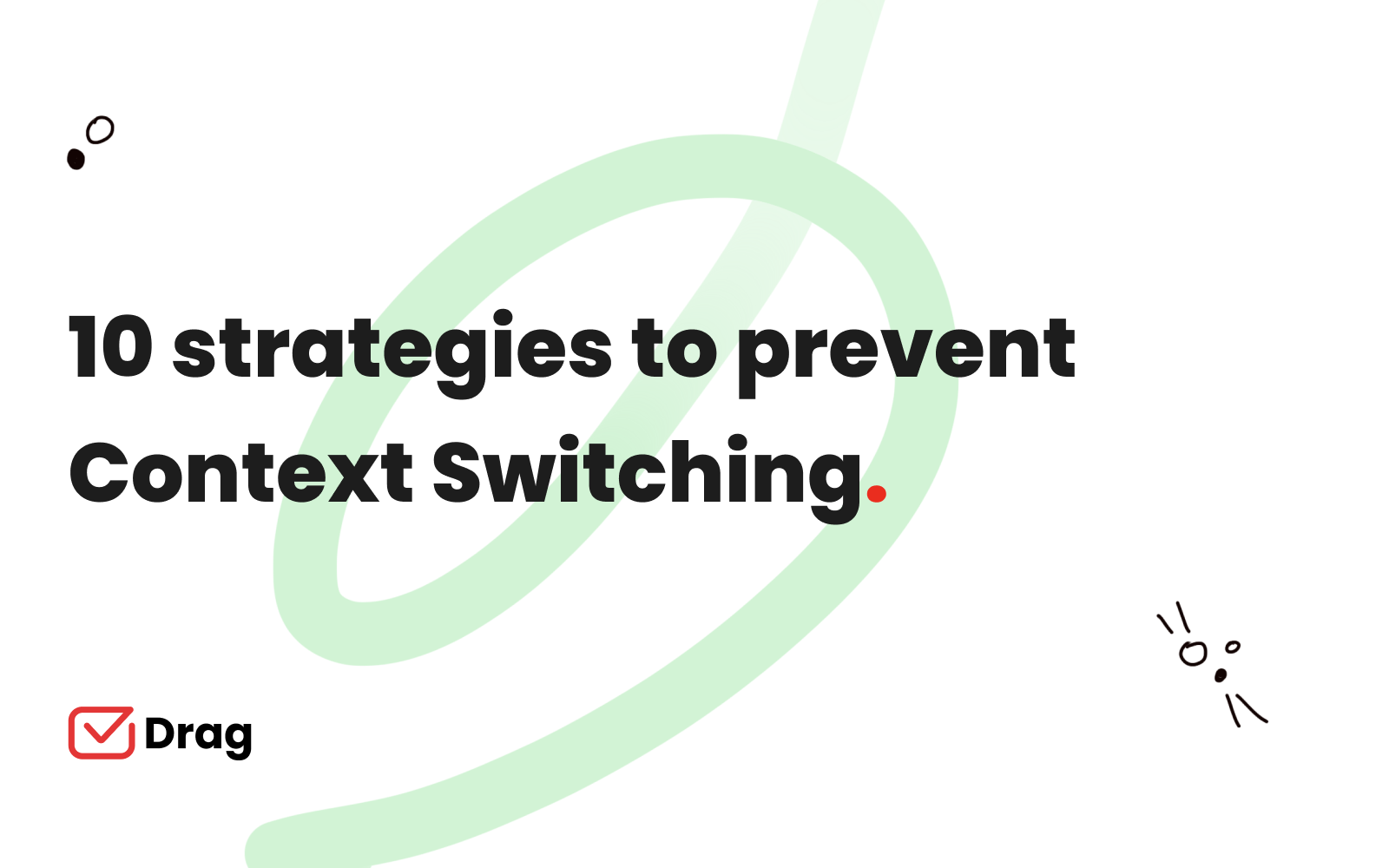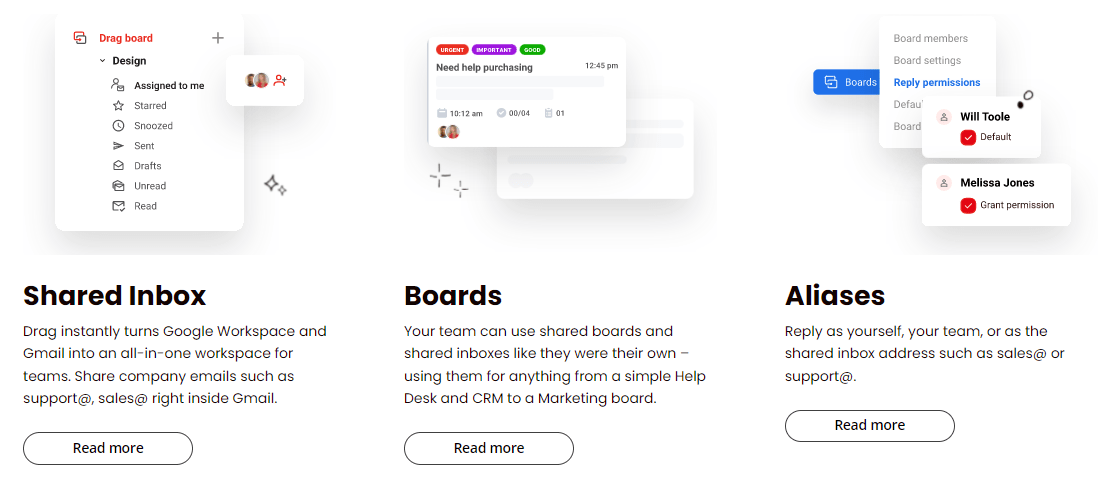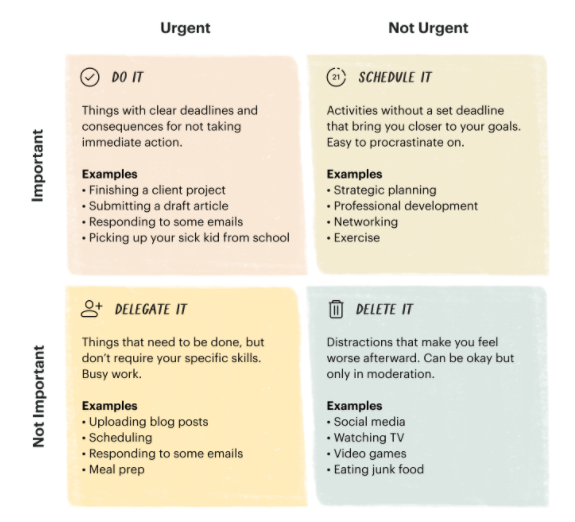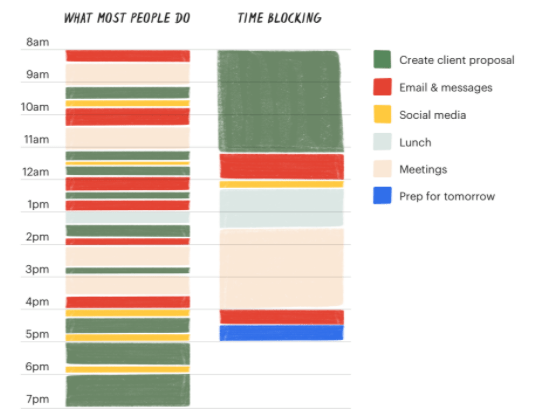
Hey! You might be checking the SEO IQ of your website, and here comes a pop-up regarding a software update. Then an email notification. Then a pop-up of top news stories.
Even once you sail through these waves and reach your main task, the voyage starts again.
This is how you commit context switching. In response to interruptions, you toggle between different tasks, screens and apps.
Worry not, you can use automation marketing tools to make your tasks easier and efficient.
Well, it’s easy for technology to do context switching as it is designed to do multi-tasking. But human brains pay a tax of time and attention each time they’re interrupted mid-task.
If you are writing a report and you get an email notification. Out of curiosity, you will check it, and then your attention will divert to that.
Even if you get back to your report after 5-10 minutes, a part of your attention remains on that mail. That’s called attention residue, making it harder for you to finish your main task.
A study found that it takes people, on average, around 23 minutes to resume an interrupted task.
To ease the process for you, I have devised the 10 best strategies to prevent context switching and boost your productivity:
- Make A To-Do-List Outside Your Head
- Prepare A Go-To Framework For Prioritizing Tasks
- Create Task Batches And Time Blocks
- Schedule Regular Screen-free Breaks
- Audit Your Distraction Habit
- Proactively Eliminate Distractions As Many As Possible
- De-clutter And Streamline Your Switches
- Resist To Respond Immediately
- Promote Thoughtful, Asynchronous Communication
- Prefer “Quality, Not Quantity”
Let’s start with the method of preparing tasks for the day.
Make A To-Do-List Outside Your Head
Our brains follow a cognitive bias in which we fixate on incomplete or interrupted tasks. However, when you plan to accomplish a task later, it will help you reduce repetitive thoughts about the task.
Designate a place to organize and add your tasks that’s not your head:
- A pen-and-paper to-do list
- A digital task manager like Dragapp

By capturing tasks for later, you can use your attention to focus on your immediate work.
Once you prepare the to-do list, you must prioritize your tasks.
Prepare A Go-To Framework For Prioritizing Tasks
You can focus on one thing at a time. However, having no priorities for the tasks can become a distraction on its own.
You must prepare a go-to framework for prioritizing tasks, which will also work as a strategy for future tasks.
There are certain key points to consider here:
- Distinguish between high-value, non-urgent tasks and low-value, urgent ones with the Eisenhower decision matrix.
- Get realistic about what you have time for with a Commitment Inventory.
- Set rigorous, data-backed priorities with Objectives and Key Results (OKRs).

You should apply the framework daily in your work. The more it is applied, the faster you’ll become at identifying what should be focused on at a given time.
Before you move ahead with the tasks, batch them and block their time.
Create Task Batches And Time Blocks
After you decide what to focus on, you’ll need a daily structure for staying focused on it.
You may not be able to escape context switching entirely, but these two strategies will help you for the same:
- Task Batching: You shall group and perform similar tasks together. For example, responding to your emails at one time so you don’t bounce back and forth between your work and inbox all day.
- Time Blocking: You may divide your day into blocks, such as “email”, “meetings”, and “deep work”. This strategy goes a step further and requires you to physically block off time on your calendar for a particular task or a group of tasks.

Now you may start your tasks, but what to do between those time blocks?
Here’s the answer.
Schedule Regular Screen-free Breaks
Do your eyes get strained while you work? Or do your eyes hurt even when you take breaks in between work?
Well, because you didn’t take a screen-free break.
Breaks provide our beleaguered brains with a chance to recharge and refresh. A scientific study on judges found that judges’ decisions to grant parole to prisoners varied drastically in connection with whether they had just returned from a break. When you push yourself to work on something that requires focus while you’re tired or hungry leads to diminishing output.
Let me give you some tips for efficient breaks:
- Take shorter breaks than fewer longer breaks.
- Take a walk for 5 minutes every hour.
- Do social meets during breaks
- Your break time should be different from electronic devices, like playing table tennis.
Apart from relaxing breaks, tracking your distraction habit also helps.
Are you above the average? People lose 800+ hours to Context Switching
t’s not just the time spent switching between tabs, whenever you interrupt something your brain keeps giving attention to the interrupted activity. this adds up throughout the day.
To help you assess the time you loose on the platform overload we’ve made a calculator.
Audit Your Distraction Habit
When you break any rule in schools, the class monitor writes that down for the teacher.
Here you are, your own monitor/ auditor.
You should follow these tips while you note down your distractions:
- Keep a log for a week. At the end of the week, look back on the distraction log.
- Ask yourself questions: Are there any patterns that trigger a context switch? Is it something to do with your workplace? Or is it a certain time of the day?
- Keep on striking out those habits in the log which you overcome.
This way, you will develop a resistance to bad distractions.
But you will also need to eliminate some distractions you couldn’t notice before.
Proactively Eliminate Distractions As Many As Possible
Now comes the hard part. Even if you think you’ll open the notification and move back to your task, that doesn’t happen.
You should follow these tips to break the bad practices:
- Turn off all the notifications from your email, social media, and other distracting apps.
- Keep the programs you’re not using for that time, like your email or team communications app, closed when you’re doing focused work.
- Exit out of websites when you’re done reading them.
- Use apps like Freedom when you need to block the web during your focus periods.
- You can even put your phone on silent or in another room during your focused work time.
If you cannot eliminate distractions, you should streamline them.
De-clutter And Streamline Your Switches
I understand that you can’t stick to one tab for a task. But when there are too many apps to go between, it gets messy to figure out what you need to do.
It leads to the cluttering of your digital space, which takes up space in your head too.You should tackle this issue by decluttering and streamlining your tabs.
Some methods will help you select fewer screens and apps to deal with and get distracted by:
- Digital declutter: Here, you can review and consolidate your apps and delete what is not required.
- Centralize your tasks into a task manager: You can set up a system to move emails and chats that require follow-up to a task manager app. With this, you aren’t using your inbox or team communication tools as your to-do list.
- Connect your to-do app with various task sources: Use an integration tool like Pleexy to manage emails, notes, tasks, and support tickets all within Microsoft To Do.
- Consolidate notifications: Consolidate all your email accounts, team communication tools, and workflows into Shift.
With streamlining the tasks, you should also learn to respond at the right time.
Resist To Respond Immediately
Why do you feel the urge to respond immediately? Will your boss get angry? Or will you lose the client?
But don’t you think it’s not the quick response but the quality response that matters?
For example, if your boss emails you about a different project than what you are working on. Would he like it if you responded immediately without understanding the project, leaving your current work? Or,
If you respond to it after going through the details and completing your work on time without losing attention?
You know which option holds the quality.
You can even put up an email auto-response that addresses the sender without answering the purpose. This way, the sender will know not to expect an immediate response, and you can do so later.
Also, if you work in a work environment that heavily considers availability, remember:
- How responsive you need to be
- Be no more responsive than that
Remember, take your sweet time to respond but keep it thoughtful and generous than other hasty responses.
Promote Thoughtful, Asynchronous Communication
Whenever you communicate professionally, the delay is considered a value of time.
Most matters don’t require quick responses, unlike emergencies. So you should train yourself to inculcate such behaviour in your workplace.
You should try this out and feel the difference by yourself:
- Focus on the quality than speed
- Understand an issue, put it into context
- Re-read after you type the message
- Make it a habit
When this style becomes your habit, your messages will likely get dealt with faster than before.
You should also focus on the ‘context rather than control’ strategy.
Prefer “Context, Not Control”
Do you know that controlling your employees and leaving them with no context leads to distractions? It eventually causes context switching.
Your employees’ productivity and efficiency are also dependent on your control over them.
It is necessary to provide them with context rather than a controlled environment. This step brings major positive effects at the workplace.
It’s rightly said that high-performance people do better work if they understand the context. It means your team should be aware of the following:
- Purpose of the project
- How it aligns with the company’s goals
- Consequences of the delay
- Opportunities after achieving it
Your team members will make good decisions and accomplish great things when they understand the context.
Conclusion
App designers develop mindful tools to empower rather than distract. The team leaders are responsible for creating norms around communication that foster focus and limit interruptions.
These strategies will definitely help you avoid context switching and permit you to set your undivided attention on what matters at that moment.
What are your thoughts or experiences on context-switching and productivity? How do you help your team reduce context-switching and maintain high productivity?
Article by Sahil Kakkar
Bonus strategy: Try Drag for free
Drag turns Gmail into your Team’s Workspace – One single place to support customers, manage tasks and close deals, from the place teams love: Gmail. We are a Techstars-backed Company, trusted by 30,000 users around the World.







